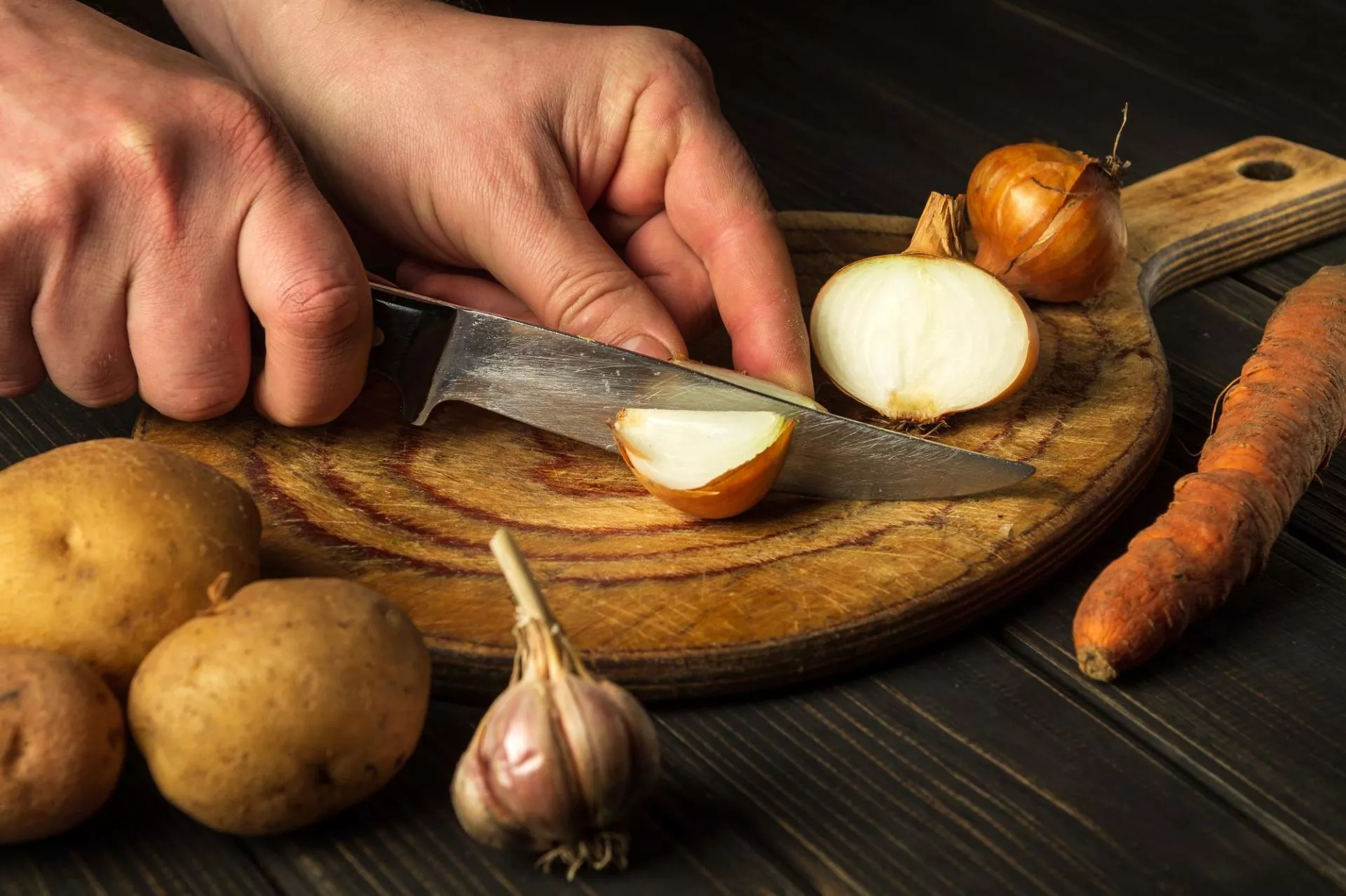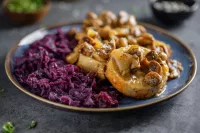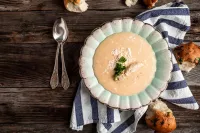Types of Onions
The onion is the most widely cultivated of all the allium genus. It is a big brother to the shallot, garlic, leek, scallion and chive. The most common cooking onion is the yellow or brown onion which have a sweeter flavour and is adored by all chefs who like to make a rich French onion soup. For Asian dishes, the red or purple onion is the allium of choice, giving a nice sharp flavour. They are also a very significant addition to raw salads and great for grilling. The white onion is less common but traditionally used in Mexican food, and it becomes sweeter when sautéed.
Cooking Steps
Cooking onions correctly is vital for the final taste of your meal, if the onions are cooked well, it always makes the final outcome much tastier. One of the problems most novice chefs have is when we follow a recipe it may say ‘cook until translucent’ or ‘soften’ and these terms can be a little confusing. The vital thing to bear in mind is that there are five main stages of cooking onions; softened, translucent, golden, brown and caramelized. All these descriptions mean a slight increase in time and sometimes adjusting the cooking temperature.
Onions are cooked efficiently in either an oil or fat. The oil could be something very neutral like sunflower or vegetable oil, but cooking in olive oil may add an extra level of flavour! Alternatively, and depending on the dish, a duck fat, butter or ghee can be used to great effect. Many chefs would suggest a pinch of salt helps to draw out some of the liquid so that the onions may brown more readily.
So here is our guide to cooking onions and avoiding those culinary errors. Cooking times are tricky as this depends so much on quantity, the type of pan and choice of oil or fat. In this sense you need to keep an eye on the cooking process and see what works for you and try to remember it for your next gastronomic adventure!
The main point is to that you need to think about how brown you want the onion to be and adjust the time and temperature accordingly. If you want to caramelize, you do not always need to stir as you want the onion to just burn a little on the pan, but not too much!
Instructions for the stages of sweating to caramelized cooking of onions:
- Heat up a pan and add oil or butter, depending on your dish. Then add your chopped onions. Make sure you choose a large enough pan so the quantity of onions can cover the entire surface and allow the onions to be easily stirred. Cook on medium heat and add just a small pinch of salt.
- Sweat the onions. This means what it says on the tin! Sweating is when the cooking process draws out the moisture from the onion and you can literally see them glisten while also reducing in mass. The heat must be sufficient to reduce the liquid content, but at this stage, try and avoid browning or burning. To prevent this just keep an eye on the heat of the pan.
- The ‘translucent’ stage. This is when after a while, the onions start to lose their opacity and begin to become translucent. Don’t forget to keep things moving by gently stirring. You will see that the onions continue to reduce in size and carry on losing moisture.
- Golden or brown onions. If you continue cooking at the same temperature, then in another minute or so, you will see the onions turn a glorious golden colour. Then after continuing to stir and after a few more minutes, depending on the temperature of your pan they will eventually turn to a nice sweet shade of brown.
To caramelize. Now, if your recipe demands a caramelized onion then if you reduce the amount of movement and allow your onions to stick to the bottom slightly, then slowly, over a period of 20 to 40 minutes, you will caramelize the onions. The trick is when you have a brown glaze on the bottom of the pan to add a little wine or water and de-glaze by stirring and producing a nice sticky finish. Depending on the required outcome you can even repeat this process and carry on until you produce a really dark brown result. Delicious!

 How To Cook Mushrooms on the Stovetop
How To Cook Mushrooms on the Stovetop 10 Meals Perfect For When It's Cold Outside
10 Meals Perfect For When It's Cold Outside



